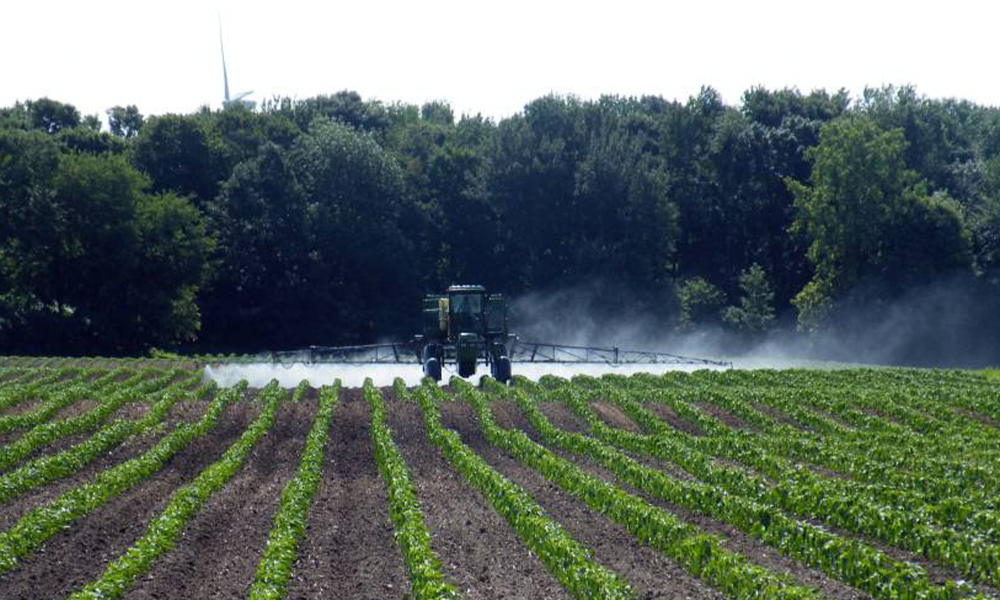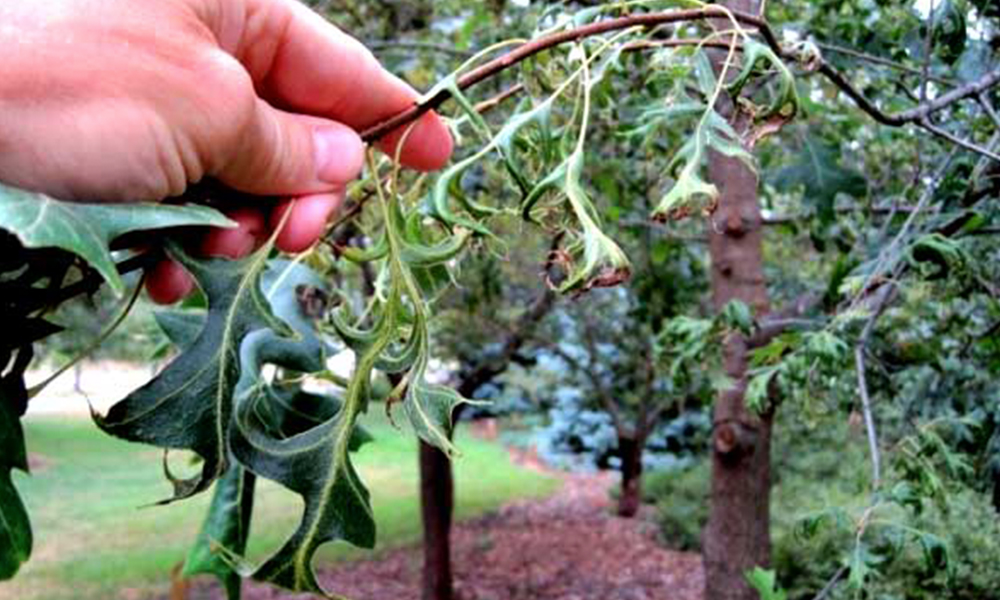Herbicide drift during crop spraying leads to negative impacts on surround crops
by Brandie Jefferson, Washington University in St. Louis
“Dicamba drift”—the movement of the herbicide dicamba off crops through the atmosphere—can result in unintentional damage to neighboring plants. To prevent dicamba drift, other chemicals, typically amines, are mixed with dicamba to “lock” it in place and prevent it from volatilizing, or turning into a vapor that more easily moves in the atmosphere.
Now, new research from the lab of Kimberly Parker, an assistant professor of energy, environmental and chemical engineering at Washington University in St. Louis’ McKelvey School of Engineering, has shed new light on this story by demonstrating for the first time that these amines themselves volatilize, often more than dicamba itself.
Their findings were published Sept. 23 in the journal Environmental Science and Technology.

The volatilization of amines when applied with dicamba may help explain the processes that cause dicamba drift. However, amines are used in other herbicides as well, including as glyphosate, the most-used herbicide in the world. Regardless of the herbicide, the researchers found that amines still volatilized.
If amines, themselves, are released into the atmosphere, they can have a negative impact on human health as they can form cancer-promoting substances. They also affect the climate and atmospheric chemistry. Because of their potential danger and prevalence, the scientific literature is full of research looking at the ways they are released into the atmosphere—except when it comes to their use in herbicide-amine formulations.
“Amines also undergo reactions to form particulate matter—tiny particles that can make their way into the body when inhaled,” Parker said. “Those particles are also toxic and carcinogenic,” and they carry consequences for atmospheric chemistry by affecting climate.
“Researchers have looked at industrial applications, animal operations and environmental sources of amines, but no one has looked at herbicides at all, as far as we have seen, despite the fact that large quantities of herbicide-amine mixtures are being sprayed onto crops across the country,” Parker said.
“We were really surprised to see that this source had been overlooked.”
Her lab has done research into the use of amines with herbicides in agriculture. In those scenarios, the amines were added to stop the herbicide dicamba from volatilizing. The technique often was ineffective, however, and the dicamba wound up drifting to nearby crops.
First author Stephen Sharkey, a Ph.D. student in Parker’s lab, led that earlier research studying dicamba volatilization from dicamba-amine mixtures and wondered, “If the dicamba is volatilizing, what’s happening to the amine that’s supposed to be there stopping the volatilization process?”
To find out, Sharkey measured the change in the amount of amines present over time when mixed with different herbicides. The results? In all mixtures, the amines volatilized from the herbicide-amine mixtures. Sharkey also worked with the lab of Brent Williams, an associate professor of energy, environmental and chemical engineering, to confirm that the amines were entering the gas phase from herbicide-amine mixtures by capturing amines from the air to measure.
In agricultural settings, Parker pointed out, amines are not only mixed with dicamba, but also with other herbicides, including 2,4D and the widely used glyphosate.

In addition to experimentation, Sharkey also quantified the amount of amines that were actually entering the atmosphere, which required a bit of detective work. He used two separate data sets—estimated rates of herbicide applications and survey data from U.S. farmers that showed which specific amines were used with different herbicides.
Sharkey concluded that herbicide use is responsible for the release of about 4 gigagrams (4,000 metric tons) of amines annually in the United States.
The findings came somewhat as a surprise to Parker, not only because the chemistry doesn’t immediately suggest that amines volatilize in this way, but also for a more practical reason.
“There has been extensive work looking at the different ways in which amines enter the atmosphere,” she said. “There has been a lot of effort put into understanding where amines come from, but research into its use with herbicides just wasn’t considered before.”

